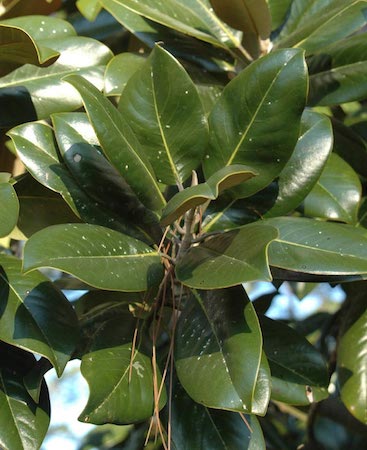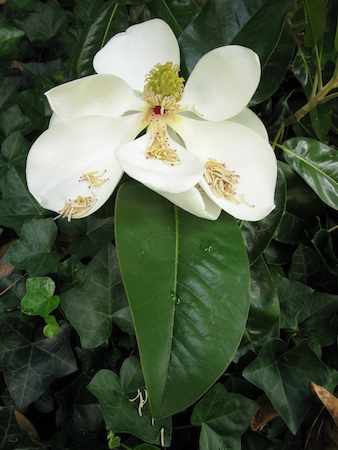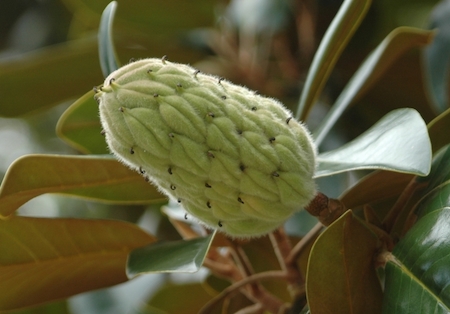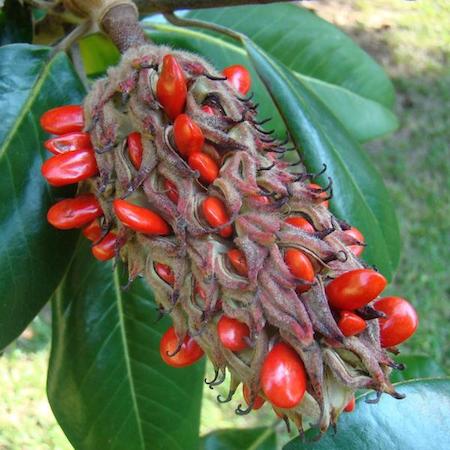Magnolia
Specifications
- Also known as: Southern Magnolia
- Latin (scientific) name: Magnolia grandiflora. Grandiflora is Latin for large-flower; magnolia-named after Pierre Magnol, professor of botany and medicine, and director of the botanical garden at Montpellier, France.
- Life expectancy: 100 years
- Height: 65 feet
- Circumference: 14 feet
-
The height and circumference measurements listed here are for the largest-known southern magnolia tree in Atlanta. This tree is located in Oakland Cemetary.
-
Special characteristics:
This is a fast-growing evergreen (does not shed its leaves in winter) hardwood.
The thick leather-like leaves don't permit much light to penetrate, so only the most shade-tolerant plants can grow underneath them.
The snowy white blooms are legendary. They are gigantic: from 7-8 inches across. They have a strong fragrant smell no one can ignore on a humid summer day. The trees that get the most direct sunlight bloom more than others.
The tree propogates itself by sending up large sprouts from the ground which then grow into new trees.
-
Annoyance factors:
The leaves are thick, leathery, and do not compost very well. The tree sheds them year round, which can be a pain if you like immaculate yards. You can’t just pick them up and move them to another location in hopes of their decaying away. They won't. You’ve got to bag the leaves and get them hauled off.
Even more annoying is the fact that the leaves collect standing water, creating a perfect breeding area for mosquitoes.
The roots grow at or near the surface. Don’t cover them up with dirt because you might suffocate the tree. Use mulch if you must level the surface and replenish as often as needed.
-
Fun Facts:
Magnolias have a ladder-like structure which makes them easy to climb by kids who can’t resist having an arboreal adventure. Magnolias are safer to climb than many other kinds of trees. Get the tree carefully pruned of dead and weak branches if you have children or wandering kids in the neighborhood.
Teach your kids to always have three points of contact (2 hands and a foot, or two feet and a hand) while they are making a move upwards. Tell them that coming down is harder because foot placement is more difficult. Have them take their time getting down, even if a meal is ready.
If you must make the tree childproof, prune the lower branches 10 feet up from the ground.
-
Photo Credits:
Leaves: Chris Evans, Illinois Wildlife Action Plan, Bugwood.org
Flower: Peter Jenkins, TreeInspection.com
Fruit: Whitney Cranshaw, Bugwood.org
Seeds: Franklin Bonner, USFS (ret.), Bugwood.org




